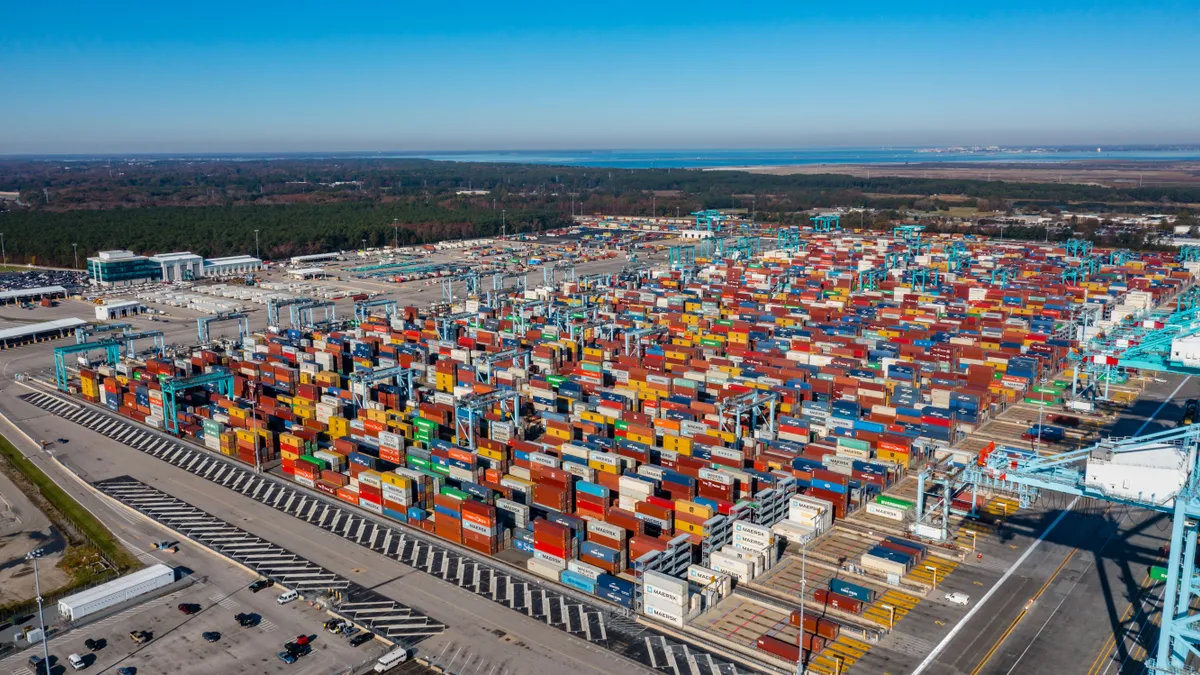Dive Brief:
- The daily vessel operating costs for open carriers has increased by 4.5% in 2020, according to an estimate from Drewry, which took 47 different ship sizes and types into consideration.
- Higher insurance payments and costs associated with the pandemic are driving the increased expenses, the consultancy said in a release.
- The pandemic actually resulted in a downturn in costs in the first part of the year, as companies closed facilities. "However, costs have jumped through the 2nd half of the year as repair facilities reopened, unleashing pent-up demand, while manning costs escalated due to disruption to crew repatriation arrangements," Drewry’s director of research products, Martin Dixon, said in a statement.
Dive Insight:
Some shippers that have been moving cargo over the last eight months might hear the news of increasing ship operating expenses and think that's what's leading to an uptick in their rates, which more than doubled on the Transpacific trade between May and September. But that's not the case, Dixon said in an interview.
The increase in spot rates has been driven by demand. Carriers have added capacity to levels that are higher than what was on the market in 2019, but it still hasn't been enough to keep up with demand. So, spot rates began to climb.
The one ship expense that is passed along to shippers is fuel, he said. Shippers will pay bunker fees for fuel that's tied to the commodities price. And as it gets more expensive for the carrier, that cost will be passed along to shippers. There's no similar mechanism to pass along the costs that are driving the more recent increases, Dixon said.
Increased prevalence of hurricanes and other extreme weather events that have become more common due to global warming have begun to hike insurance costs for just about anyone in a property-owning business, according to Dixon.
The insurance costs have "risen, partly, because ... many of the insurance syndicates have been losing money," he said, noting that higher claims across the economy is hardening the insurance market and affecting carriers.
Costs associated with the pandemic, though, have been more impactful to carriers than their insurance increases. The pandemic has resulted in the inability for seafarer repatriation and workers aboard ships — who typically stay aboard for three months — have now been there for up to a year, Dixon said.
"Seafarers have been paid premium payments to compensate for the extended time of sea," he said, adding that there has also been increased coronavirus testing aboard the ships that have increased costs. Drewry estimated the average manning costs have risen "at least 5%" as a result of the pandemic, he said.
But increased expenses haven't hurt the container carriers, which have benefited from low bunker costs and higher freight rates.
"Their profitability is unusually very good at the moment," Dixon said of the container carriers.
Shippers are starting to see increases in their long-term contracts, but this has more to do with the high rates in the spot market than it does the increased expenses for the shipper, according to Dixon.
Shippers should be more worried about capacity being offered on the market and how that impacts rates, rather than vessel operating costs. In a normal market, though, shippers might keep an eye on vessel expenses, he said.
"Whilst there's no direct link between [vessel operating expenses] and the rates they pay, they obviously have an impact somewhere down the line," Dixon said. "But in the current market, and the way that the current market is influencing freight rates, it's a little bit less of an issue for" shippers.















